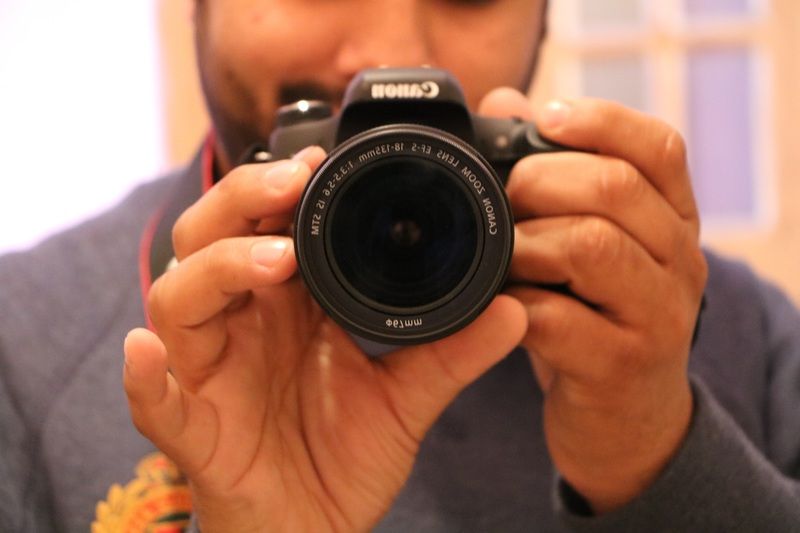When you intend to purchase a Wider Prime Lens for your DSLR camera, 24 mm and 35 mm lens are the two major types of Wider Prime Lens that will be the best option in front of you.
You may think both lenses are captured the same things in the same pattern, so what is the difference that makes them distinguishable to each other?
However, if you’re a newbie photographer and getting confused to decide among 24mm vs. 35mm lens capturing an image, you’ve come at the perfect place to remove your confusion quickly.
Let’s dive for the detail explanation-
Why 24mm Lens Used For:
24mm can avoid the distortion issue to capture the full scene. That’s why a 24mm lens is ideal for capturing any landscape type image like a mountain range, city skyline view, environmental coverage, etc. This lens can capture a wider area, basically focusing on the background rather than the subject.
A 24mm lens is exclusively wider and can capture an image without creating an Excessive Distortion Level. This lens is getting popularity day by day as it can say details story in the captured scene.
Using a Graduated ND Filters with a 24mm lens, you’ll find a more balance in between the sky and the ground while capturing a Landscape or Skyline view.
Why 35mm Lens Used For:
SLR cameras (Single-lens reflex, digital), Rangefinder Cameras (film & digital), Mirrorless interchangeable-lens Digital cameras, Point & Shoot Film camera, Disposable Film camera are using 35mm lenses for their numerous image applications and so on.
35mm lenses are widely used for capturing portrait or street types photography where people in context get focused rather than the surroundings. A 35mm lens is more versatile than any other lens. You can use this lens to capture almost anything.
Portrait, Travel Shot, Macro Photography, Street Photography, Real Estate Photography, Product Photography, even Landscape type image also can capture using a 35mm lens.
The reason of the versatility of this lens is its awesome focal length. The focal length of this lens is near to the focal length visible to the human eye. Therefore, in many videography or filmography, this lens is widely using to capture the video.
Comparison Between 24mm vs. 35mm Lens:
A 24mm lens is suitable for capturing Landscape, whereas a 35mm lens is good for a street portrait. The main difference between the 25mm and 35mm lens is that the 25mm lens is small in size and brighter. Whereas the 35mm lens is ultra-lighter & sharper. 24mm lens is a Walk Around Lens. 35mm lens is a Better Corrected Lens.
|
Aspects |
24mm lens |
35mm lens |
| Features | -Fast, smaller & lighter lens
-Sufficiently Wider -Remarkably Sharper -Wonderful Zooms -wider apparatus (f/.8 or more) -Minimal Perspective Distortion |
-Very lighter
-Compact -Versatile (indoor/outdoor) -Low-light Performance -Forced Interaction -Can use for videography -Near to the human eye Focal Composition |
| Scope in | -Landscape
-Astrophotography -Group Portraits -Event Photography -Capturing at low light |
-Food photography
-Candid Street Photography -Environmental Portraits -Museums image -Real Estate Photography -Travel shots -Shooting-Across-the-Dinner-Table Photography |
| Performance | -The poor performer than 35mm lens | -Better performer but Short-Portrait Lens |
| Limitations | For street photography challenging to separate the subject | FOV is not supportive in case of indoor capturing |
| Specialty | No vantage points | The vantage point for the viewer of videography or filmography |
| Applicable for DSLR format | Perfect for crop sensor DSLR
|
Full-frame camera DSLR |
Top five 24mm lenses:
Here is our top selection for the best 24mm lenses available nowadays.
1. Canon EF 24mm f/1.4L II USM
Key Features:
- High-quality
- Ultra-low Dispersion Elements
- Enhanced Clarity and Sharpness
- Speedy Autofocus
2. Nikon AF-S NIKKOR 24mm f/1.4G ED
Key Features:
- Best Aperture
- Reduced Aberrations
- Reduces Lens Flare
- Enhance Image Contrast
3. Sony FE 24mm f/1.4 GM
Key Features:
- f/1.4 Aperture
- 11-Blade Rounded Diaphragm
- Reduced Flare & Ghosting
- Super Sonic Wave Motor
4. Sigma 24mm f/1.4 DG HSM Art
Key Features:
- Reduced Lens Anomalies
- 3FLD,4 SLD elements
- Integrated HSM
- Cost-Effective, but top-level quality
5. Samyang AF 24mm f/2.8 FE
Key Features:
- Ultra-Multi-Coating to reduce flare & ghosting
- Reduced Aberrations
- Simple Design
- Fast & Effective Autofocus
Top Five 35mm lenses:
Top Five 35mm lenses available in the market are given below-
1. Sigma 35mm f/1.4
Key Features:
- Several Corrective Elements
- A multi-layer Coating
- Quiet HSM operation
- High-Level of Resolution
2. Canon RF 35mm f/1.8
Key Features:
- Compact & Lighter
- Optical Stabilization
- Awesome Bokeh Effect
- Increased Contrast & Color
3. Canon EF 35mm f/2
Key Features:
- Super Spectra Coatings
- Ring-Type Ultrasonic Motor
- Good Image Stabilization System
- Image Stabilization Inclusion
4. Nikon NIKKOR Z 35mm
Key Features:
- 11 Elements in 9 Groups
- Stepping Motor
- 0.25m Focus Distance
- Exclusive Center Sharpness
5. Tamron SP 35mm f/1.4
Key Features:
- Low Dispersion
- Second-generation BBAR-G2 Coating
- Rapid Focusing
- Quality Background Blur
Frequently Asked Questions (FAQs):
Why I Should not use a 24mm lens for my street photography?
24mm lenses are two wider to capture the street image. This lens focuses on the surroundings rather than people in the surroundings. Street photography needs to focus on the people rather than the surroundings. That’s why you should avoid using of 24mm lens for street photography or portrait photography.
What is the specialty of a 35mm lens that makes it so popular?
35mm lens is one of the most versatile lens usages by all professional photographers. This lens is featuring an exclusive vantage point of view for the viewer. This lens can resemble the view the same as the viewpoint from the human eye. That is the main reason a 35mm lens is most commonly used in videography or film shooting.
Which lens should all photographers have?
Undoubtedly, it is a 35mm lens. A 35mm lens leaves an opportunity to capture the background along with the subject describing the full story to the viewers. It has a slightly wider angle of view (not too wide, not too narrow, not too long as well) than the normal range. Besides this, a 35mm lens offers the user more freedom of movement.
Final verdict:
Which one you want to choose in between the 24mm vs. 35mm lenses, basically depends on your photo capturing type. If you intend to capture Landscape, pick a 24mm lens. Again, if you want to capture portraits, street photography, group image, or other environmental coverage-go with a 35mm lens.
That’s all for today.






